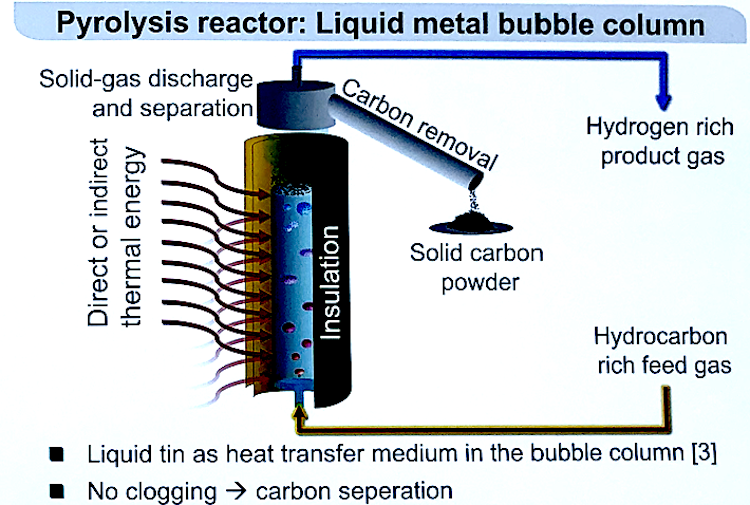[CfD or Contracts-for-Difference subsidies pay the difference between an entrenched energy technology and a newly developing one to bring down those costs till it has scaled-up. CfD policies in the UK for its first decade of offshore wind jumpstarted widespread deployment and resulting cost reductions.]
Source: Hydrogen Insight:
To cover the cost gap with fossil fuels, Japan will offer CfD-style subsidies for domestic and imported green hydrogen starting in 2024. Projects supplying H2 from 2030 would see 15 years of payments
The Japanese government is planning to launch a subsidy scheme to cover the cost gap between low-carbon hydrogen — as well as its derivatives — and fossil equivalents, with strings attached on whether the project can operate without support afterwards, according to a government committee report published this week.Rather than offering a fixed payment or tax credit to producers, the subsidies would, effectively, be Contracts for Difference (CfD) for both domestically produced and imported H2, in which recipients will receive a top-up payment above a set reference price — or have to pay the government the difference if production and transport costs end up being lower.
This allows producers to sell clean hydrogen at the same price as fossil alternatives, regardless of market fluctuations, increasing the likelihood that offtakers will commit to buying volumes and thereby providing financial certainty for investors.The reference price would be based on the highest of three options: the price of raw materials and fuels that will be displaced by low-carbon hydrogen arriving in Japan (ie, liquefied natural gas or coal), this price plus a measure of “environmental value”, or the actual sales price of grey hydrogen or its derivatives in existing markets.
As these reference prices rise with the introduction of carbon pricing and other regulatory measures, the amount of subsidy paid out would slowly decrease. Similarly, if the cost of producing and transporting low-carbon hydrogen — which Japan defines as having a carbon intensity of 3.4kg of CO2 per kilo of H2 or lower — drops below the reference price and “it is thought that the business operator will earn an excess profit”, the company would have to pay the government this difference in price. The report from the Ministry of Economy, Trade and Industry’s Comprehensive Resources and Energy Investigation Committee suggests hydrogen suppliers, including companies exporting H2 to Japan, would be able to start applying for these subsidies in 2024, as long as they can supply at least 10,000 tonnes a year from 2030.
The subsidies would also cover the cost gap for 15 years, although the projects are also required to be capable of running for another ten years once these payments cease.If a project cuts off supply or otherwise changes its operations substantially in this ten-year period, the Japanese government would ask for a refund equivalent to the remaining financial value of the equipment multiplied by the subsidy rate.
The Japanese government plans to initially support the use of hydrogen and its derivatives in power generation, with the committee report suggesting this would build up a supply chain and reduce costs for hard-to-abate sectors through economies of scale.However, the use of H2 and ammonia in power generation has been strongly criticised by some environmental groups and analysts, since plans to initially co-fire with fossil fuels will extend the lifetime of these polluting assets. They also argue that the grid can be more effectively decarbonised through a rollout of renewables that directly feed power into the grid.
However, others have claimed that sites with good wind and solar resources are more likely to be found outside the country, and beyond 4,000km, high-voltage transmission lines are prohibitively expensive, making hydrogen exports a more economically viable of importing clean energy — although the industry is still investigating the best way to actually transport H2 overseas given the huge efficiency losses involved. The committee report also says that the government will study the feasibility of a pledge to start blending 1% synthetic methane made using low-carbon hydrogen into the gas grid by 2030, raising this to 90% by 2050 — particularly since synthetic fuels are only expected to be commercially viable from the 2030s onward.



